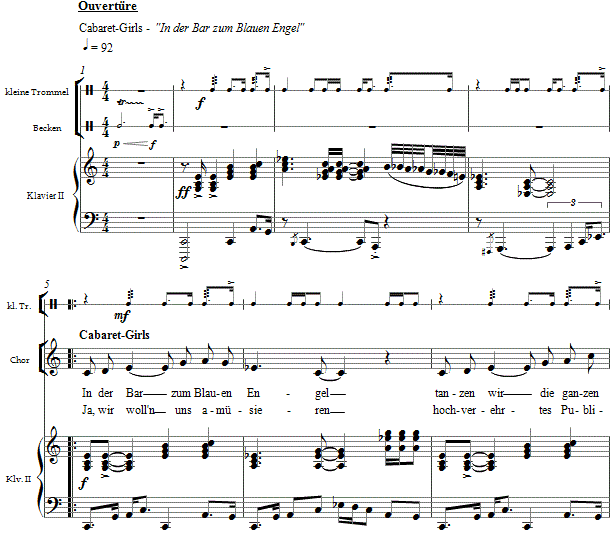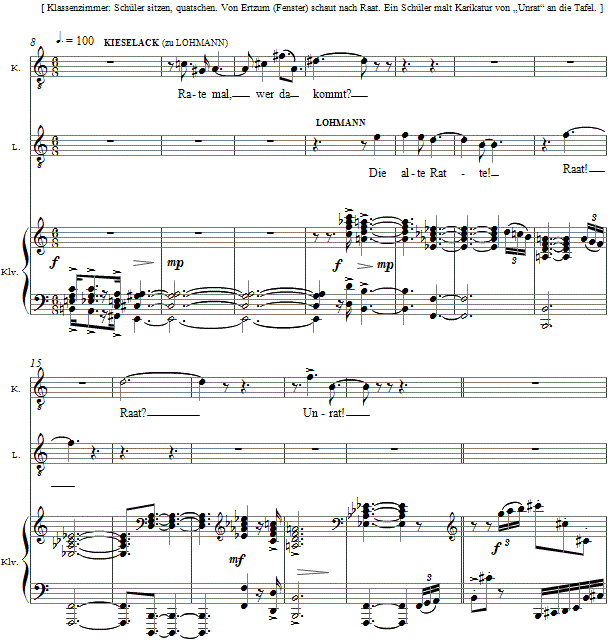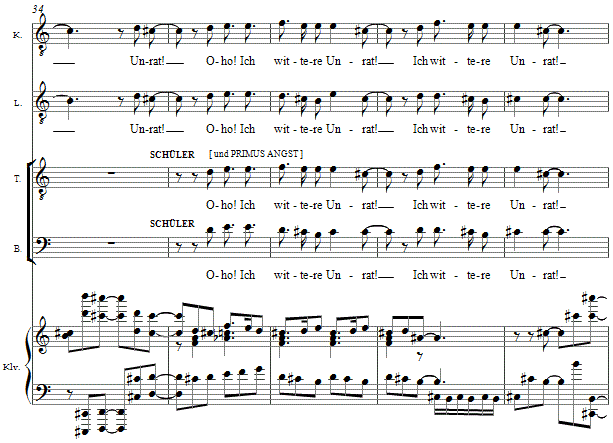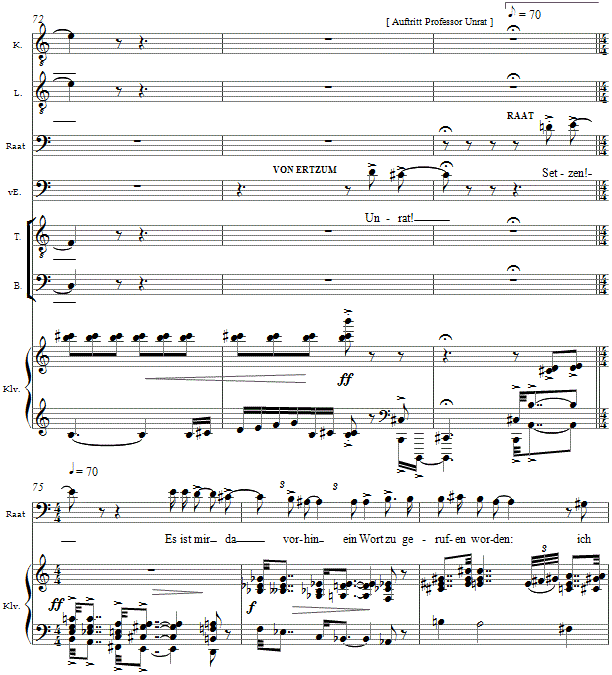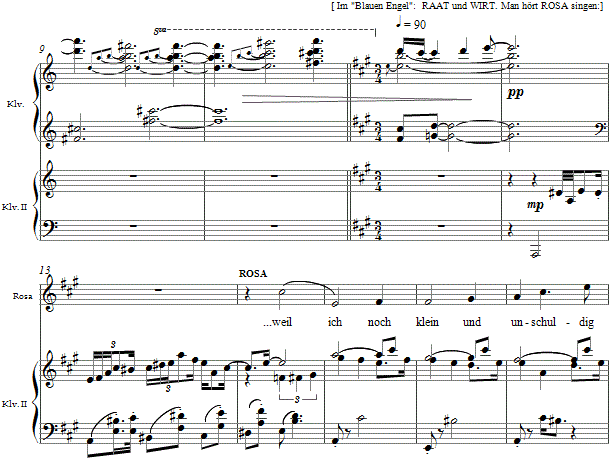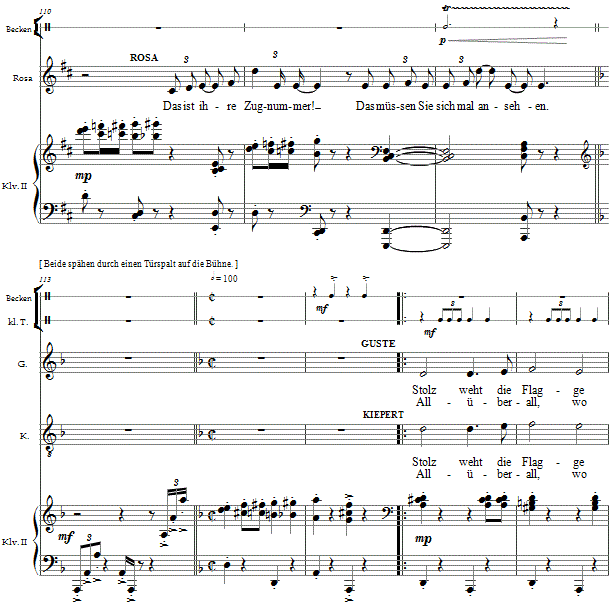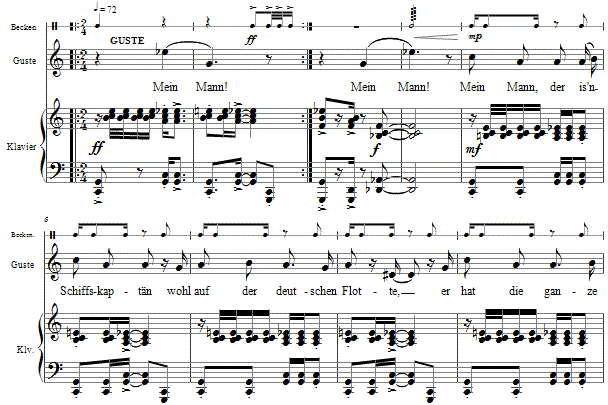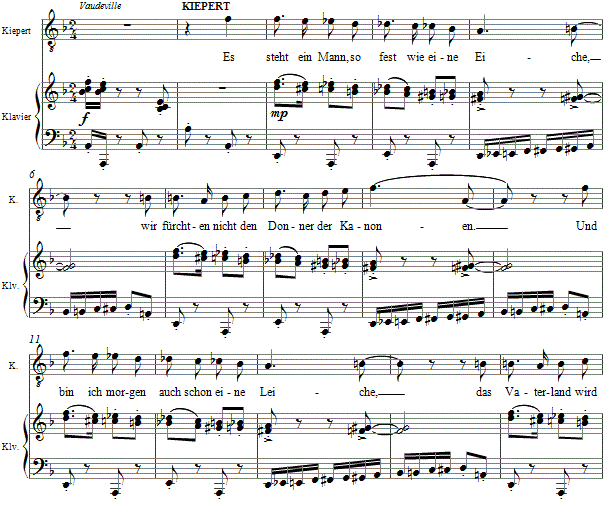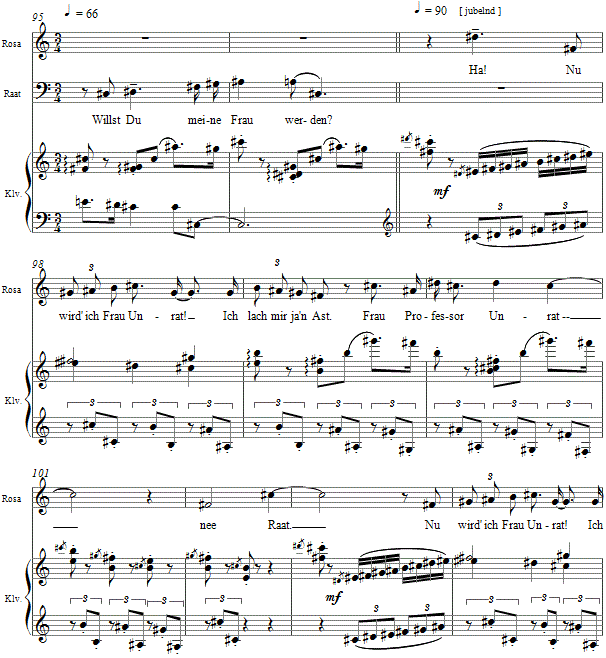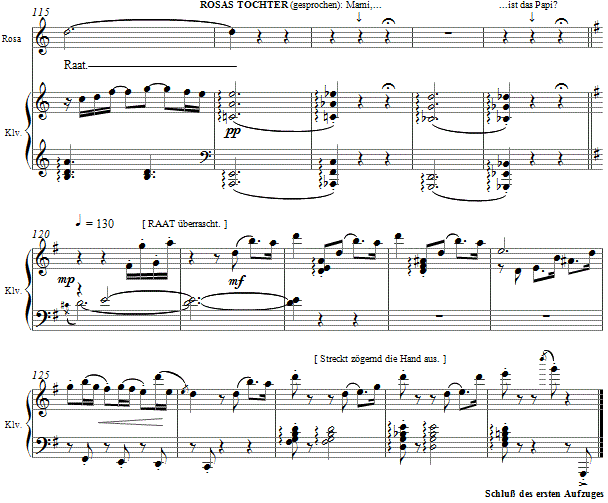Music and Texts of GARY BACHLUND
Vocal Music | Piano | Organ | Chamber Music | Orchestral | Articles and Commentary | Poems and Stories | Miscellany | FAQs
Professor Unrat - (2012)
Susanne Paasch nach Heinrich Mann
opera in two acts
Günter Roth gewidmet
Heinrich Mann
In 1905, Heinrich Mann published his fiction, Professor Unrat, through Albert Langen. Over a number of years, I have thought much about the novel, and read it a number of times while marking my copy with many musical ideas and other structural notations. Due to the difference between copyright laws in the United States and Europe and after both amended their laws, especially through the European Commission's lengthening copyrights (and in some cases re-copyrighting public domain works) to equate with the death dates of authors, the novel in German is in the public domain in the United States while under copyright through S. Fischer Verlag here in Frankfurt. It became public domain worldwide in March 2020.
I had incorrectly assumed that being public domain in the US, the novel would be public domain in Europe, and set about an opera setting while in the United States. Unlike the Josef von Sternberg film based on a screenplay by Carl Zuckmeyer, Karl Vollmöller and Robert Liebmann, and the Peter Turrini musical adaption based on that film, Susanne Paasch and I chose to adhere to Mann's literary structure and its dénouement, which von Sternberg and Turrini abandoned for their own end. For this the libretto is organized as Kapitel -- chapters -- with interludes as an opera adaptation could employ for scene changes.
There are a number of adaptations beyond the above, including two handled by Fischer Verlag, a stage version by John von Düffel (1966) and a "comedy" adapted by Gottfried Greiffenhagen and Peter Zadek (1984), and several theaters in Germany have adapted the novel as well, including recent versions by Sebastian Baumgarten and Carmen Wolfram (Berlin, 2008) and Rainer Lewandowski (Bamberg, 2011). There was also a ballet based on this story and characters with music by Marius Constant (Berlin, 2005). In all cases to my knowledge, Heinrich Mann's original novel and structure have been set aside, in favor of the "newer" von Sternberg film, for so iconic was the cast including Emil Jannings and Marlene Dietrich. We chose Mann's structure, story elements and ending as he intended, for so do I respect Mann's original.
(By interesting circumstance, Heinrich Mann lived for a time until his death in Santa Monica, California, and I later lived there as well, only miles from his home. He is buried in Berlin, where now I make my home, though this web site is administered in California.)
Susanne Paasch, Günter Roth, Gary Bachlund
Our thanks to Günter Roth for his guidance in reading and critiquing the libertto as it was worked. As stage director and Intendant for many decades, his keen theatrical sense has been most welcome and appreciated.
The setting is for twelve singers and a mute role for the daughter, with two small choral ensembles, one the students, and the other the "Cabaret-Girls." The piano-vocal edition is complete and edited, while the orchestration is being done now and should be completed by the end of 2012. Of course, should a European theater wish a premiere, we will together arrange with Fischer and respect their publisher's rights in toto.
Besetzung: Kieselack – Tenor, m. P. -- Lohmann – Tenor, gr. P. -- von Ertzum – Bariton, m. P. --
Professor Raat – Bariton, gr. P. -- 1. Mann (Straßenhändler/Gläubiger) – Bariton, kl. P. --
2. Mann (Wittikopp/Gläubiger) – Bariton, kl. P. --Rindfleisch – Bass oder Bassbariton, m. P. --
Rosa Fröhlich – Mezzosopran, gr. P. -- Wirt – Bariton, kl. P. -- Guste – Spielalt oder Mezzosopran, m. P. --
Kiepert – Spieltenor, m. P. -- Primus Angst – Tenor, kl. P. --Männerchor (6–8) – Tenor & Bariton -- (Schüler/Bürger)
Damenchor (4–6) – Mezzosopran und Alt – (Cabaret-Girls/Bürger) -- Rosas Tochter – Sprechrolle, kl. P.
Statisterie – Zuschauer im Bar, Kellner, Bürger, Brasilianer, Leipziger, Knust, Richter, Polizei
Orchester: 2 Flöten (auch Piccolos), Oboe, 2 Klarinetten in B, Bassklarinette, 4 Hörner,
1. & 2. Schlagzeug, Harfe, Klavier (auch Celesta), Streicher
Bühnenmusik: Klarinette in B, Geige, Kontrabass, Klavier, 1. Schlagzeug ( Bar zum Blauen Engel )
2 Geigen, Klavier ( Kurkappelle / Seebad )
In place of an orchestral overture or opening the work directly in the classroom of Professor Raat, we chose to use the stage band and Cabaret-Girls, entertaining their clientele with a short number.
The first scene in Professor Raat's classroom is one of chaos as the students make fun of him. These stark opening chords as at measure 8 are the love-hate theme, one of many to follow throughout the score as leitmotivs.
Professor Raat -- a baritone role -- is hounded by this taunting theme, first heard in the classroom and then later out in the streets.
Raat's entrance is made over his leitmotiv, which then is transposed into many tonal regions as a threatening monologue ensues. In later scenes with his students we hear a portion of a Latin lesson drawn verbatim from Ovid.
Raat finds the bar, and therein Rosa is heard singing one of her many songs. Susanne Paasch as librettist has completed a number of extended strophes which Heinrich Mann only began, and which find their way into the various scenes.
Among the many numbers that the two comedians, Guste and Kiepert, have is their "specialty," a political-patriotic vaudeville number, of many verses which rise step-by-step to a climax for their audience in the Blaue Engel. The stage band is made up of clarinet, violin, piano, contrabass and a single drummer with only a small snare and cymbal.
Among the other vaudeville numbers which act as curtains between scenes and allow of stage change from bar to classroom and back is this, which then Rosa steals from Guste in a subsequent scene.
Kiepert gets his vaudeville number as well, this a commentary on the era in Germany before the First World War. This interlude separates an intimate scene between Raat and Rosa and an outburst in the classroom between the three students, Kieselack, Lohmann and von Ertzum.
At the proposal of marriage, Rosa -- a mezzo soprano -- erupts with enthusiasm.
The first act ends at Chapter Twelve with the twist that Rosa's daughter comes upon her and Raat together, asking "Mommy, is that Daddy?"
The second act follows the literary structure of the novel further, through until the assault on Rosa and Lohmann by Raat, and his and Rosa's arrest to the derision of the townspeople. A stage banda which opens the second act is piano with two solo violins which accompany a song by Rosa in the sea resort. Thereafter, the remainder of the score is played by the full orchestra in the pit. At the end, Lohmann has the last line: "Tja.... Das war's! Die Letzten werden die Ersten sein." The duration of the opera is circa 2 ½ hours of music.
An emulation of the Second Act interlude for orchestra, circa 5' 00" -

